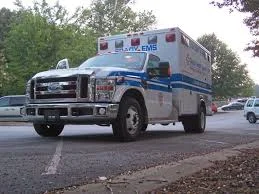SMACC Chicago
Social Media And Critical Care
Here at Taming the SRU, where we’ve been SMACC-infatuated for more than a year now, it’s easy for us to forget that many of you out there are still unfamiliar with what the fuss is all about. SMACC is the Social Media and Critical Care conference. Its next iteration, the third annual (and first to occur in North America), is coming in late June in Chicago, and wild horses couldn’t keep us away. Taming The SRU is honored and stoked to be an Affiliated SMACC Website.
Isn’t this just another CME conference, you ask? Emphatically, no. Weingart has called it “simply the greatest medical conference in the history of the world,” and we don’t think this is hyperbole. SMACC aims not only to educate; SMACC aims to entertain, and mostly, to inspire. To quote smacc.net.au: “SMACC is a high impact academic meeting fused with cutting edge online social media to deliver innovation with education. The underlying ethos is to provide free online education with open access, in what has come to be known as ‘FOAM’ (Free Open Access Meducation).” Get this: all sessions will be recorded and released as videos or podcasts online on the affiliated SMACC websites following the actual conference, for free! And yet, hundreds of us will flock to Chicago to attend in person. Why? We’re addicted to the inspiration of FOAMed, and the maximum dose of this inspiration attainable is SMACC, live and in person. (Plus, we’re sick of just ‘favoriting’ Minh Le Cong’s Tweets, and we want to shake his hand or give him a big ‘ol bear hug.) This is not your father’s medical conference. It’s infinitely better.
SMACC also aims to connect people across boundaries, and succeeds in doing so like no conference ever has. Wherever you practice critical care (prehospital, ED, OR, ICU), SMACC is for you. Whatever your discipline (student, EMT, medic, nurse, PA, NP, CNS, CRNA, doc), SMACC is for you. Whatever your specialty, whatever your experience level, whatever country you call home, whatever your clinical setting: as long as you seek inspiration to be as good as you can be at optimizing your sick patients’ outcomes, SMACC is for you. Right now, go to the brochure and look at it for just 60 seconds. Can you get a witness? You bet. Listen to this brief podcast in which Bill Knight, Jeff Hill, and I testify about the reasons for our excitement about our upcoming road trip to Chi-town. Still not sure? Check out the archives from SMACC 2014 (Gold Coast, Australia). We think you’ll be convinced. But, be forewarned: there’s no cure for SMACC addiction.















